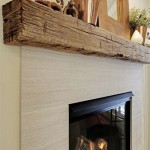Fireplace Building Code in Ontario
In Ontario, the construction and installation of fireplaces are governed by the Ontario Building Code (OBC), which aims to ensure public safety and prevent fire hazards. The OBC contains specific regulations regarding fireplace construction, installation, and maintenance, covering aspects like clearances, materials, venting, and firestopping. Understanding these regulations is crucial for homeowners and contractors alike, ensuring the safety and functionality of fireplaces.
Fireplace Clearances
Fireplace clearances refer to the minimum distances required between the fireplace and surrounding combustible materials such as walls, floors, and ceilings. These clearances are essential to prevent the spread of fire and heat. The OBC specifies clearances based on the type of fireplace, its fuel source, and the materials used. For example, the minimum clearances for a wood-burning fireplace with a masonry firebox are different from those for a gas fireplace with a prefabricated firebox. The OBC also requires firestopping, which is a non-combustible material used to seal gaps and openings around the fireplace to prevent the spread of fire.
Fireplace Venting
Proper venting is crucial for removing smoke, gases, and heat from the fireplace, ensuring safe and efficient operation. The OBC mandates specific vent requirements based on the type of fireplace, the fuel used, and the size of the firebox. For example, wood-burning fireplaces typically require a chimney with a specific diameter and height, ensuring adequate draft for the removal of combustion products. Gas fireplaces, on the other hand, may utilize factory-built vent systems that are designed to safely vent the fireplace gases. The OBC also specifies requirements for vent terminations, ensuring proper airflow and preventing the buildup of flammable gases.
Fireplace Installation and Maintenance
The OBC requires fireplaces to be installed and maintained by qualified professionals. Proper installation ensures that the fireplace meets all safety requirements and operates efficiently. Licensed gas fitters are required for the installation of gas fireplaces, while certified chimney sweeps are recommended for inspecting and cleaning chimneys, ensuring proper draft and preventing chimney fires. Regular maintenance, including chimney cleaning and inspection, is essential for maintaining the safety and efficiency of the fireplace.
Fireplace Materials
The OBC specifies minimum requirements for the materials used in fireplace construction, ensuring safety and longevity. For example, the firebox, which houses the fire, must be made of fire-resistant materials like masonry or metal. The hearth, the area in front of the fireplace, must be constructed of non-combustible materials like stone, tile, or concrete. The OBC also regulates the use of fire-resistant materials for fireplace surrounds and mantles, ensuring they can withstand the heat and prevent the spread of fire.
Fireplace Inspections
The OBC requires that all fireplaces be inspected during construction and after installation. These inspections ensure that the fireplace meets all safety requirements and is properly installed. Inspections are typically conducted by a qualified building official or inspector who verifies the fireplace's compliance with the OBC.
Conclusion
Following the Ontario Building Code requirements for fireplace construction, installation, and maintenance is essential for ensuring a safe and enjoyable fireplace experience. By adhering to these regulations, homeowners and contractors can minimize fire hazards and ensure the longevity and functionality of their fireplaces.

Fireplace Chimney Clearances Information Canadian

Construction Codes Of Ontario

Fireplace Chimney Clearances Information Canadian

Fireplace Hearth Extension Rules Structure Tech Home Inspections

Are Wood Fireplaces And Stoves Legal To Use In We Love Fire

Chimney And Fireplace Code Canadian Building
Mantle And Fireplace Surround Minimum Clearances

Wood Burning Appliances Canadian Home Inspection Services
Installing A Wood Burning Appliance

Fireplace Surround Code Requirements Outdoor Designs Hearth
Related Posts








